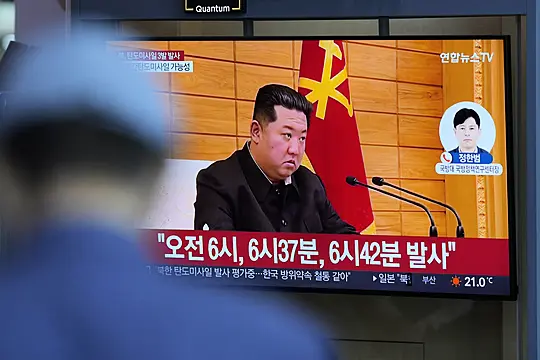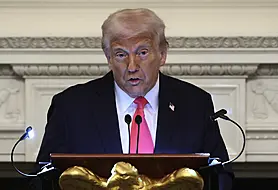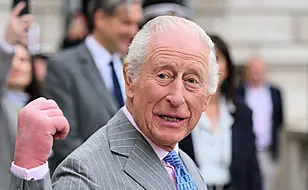North Korea has test-launched a suspected intercontinental ballistic missile (ICBM) and two shorter-range weapons into the sea, South Korea said.
The move came hours after US President Joe Biden ended a trip to Asia where he reaffirmed America’s commitment to defend its allies in the face of the North’s nuclear threat.
If confirmed, it would be North Korea’s first ICBM launch in about two months amid stalled nuclear diplomacy with the United States.

Breaking its 2018 moratorium on long-distance launches in March, North Korea claimed to have test-launched its longest-range missile as part of its development of functioning nuclear-armed missiles that can reach the American homeland.
The launches took place as North Korea made a much-disputed claim that its first domestic Covid-19 outbreak was weakening.
After an emergency national security council meeting, the South Korean government said North Korea fired a suspected ICBM and two short-range ballistic missiles.
“North Korea’s sustained provocations can only result in stronger and faster South Korea-US combined deterrence and can only deepen North Korea’s international isolation,” the South Korean government statement said.

“(Our) government is maintaining constant readiness to strongly and effectively respond to any kind of North Korean provocation.”
Japanese defence minister Nobuo Kishi called the launches “an act of provocation and absolutely impermissible”.
US secretary of state Antony Blinken held separate calls with his counterparts from South Korea and Japan during which they condemned the launches as a clear violation of multiple UN Security Council resolutions, the State Department said.
Mr Blinken noted Washington’s commitments to the defence of South Korea and Japan “remains ironclad” as the three allies continue to co-operate to achieve the complete denuclearisation of the Korean Peninsula, the statement said.
“(The launches) were a political message. They’re saying they feel bad” about Mr Biden’s recent summit with South Korean President Yoon Suk Yeol, said Chang Young-keun, a missile expert at Korea Aerospace University in South Korea.

South Korea’s military said the suspected ICBM reached a maximum height of 335 miles while traveling 223 miles east after being fired from the North’s capital region.
The Joint Chiefs of Staff (JCS) said the North apparently lost the second missile 12 miles into flight, while the third missile flew 472 miles on an apogee of 37 miles.
A JCS statement said the US and South Korean militaries fired two surface-to-surface missiles in response to demonstrate the allies’ striking capabilities.
It said the allies had detected North Korea’s preparations for the launches in advance. It said South Korea’s air force had conducted an “elephant walk” on Tuesday involving 30 fully-armed F-15K fighter jets parading along a runway in formation.
The US Indo-Pacific Command earlier said the missile launches highlight “the destabilising impact of (North Korea’s) illicit weapons programme” though they did not pose an immediate threat to US territory and its allies.







